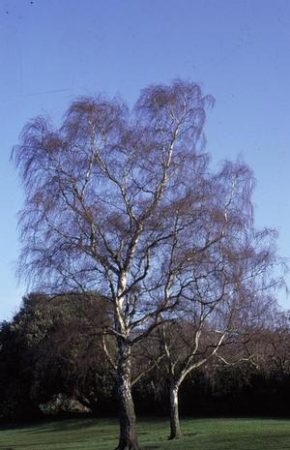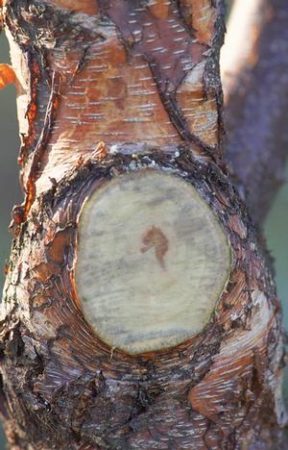Post category: Pruning
Young deciduous trees
Pruning trees and shrubs can be quite complicated but there are a few general guidelines to consider. The only essential pruning is the removal of dead, damaged or diseased branches, and even this might not need to be carried out in a natural setting.

Trees have natural shape that should be preserved
Trees and shrubs generally do not need pruning. However, the shape of a tree, or the flowering display of a shrub, can be enhanced by pruning. Carefully observe the plant’s shape and discover its flowering time before attempting pruning.
Mature trees
Mature trees may need considerable pruning for safety reasons if large, heavy limbs pose a hazard. This dangerous and highly skilled work is best left to a qualified, fully insured tree surgeon.
If a small branch has to be removed, to let in light, for example, it should first be cut half way through on the underside, about 45 centimetres from the trunk. This cut prevents the branch tearing away the bark of the trunk. Next, cut through from the top. Finally, cut off the ‘snag’, leaving the all-important branch collar undamaged.
Conifers
Most conifers are best left unpruned because any pruning more light foliage trimming will tend to spoil their shape, which is the main reason for growing them. If they get too big for their position, take them out completely. ‘Topped’ conifers are an eyesore!
Shrubs
Flowering shrubs generally benefit from a little careful pruning. It helps to maintain a good display of flower and prevents the shrubs getting too big or too dense. The aim is to encourage the replacement of old shoots by new ones, removing the old ones completely, from where they arise on larger branches or from the ground.

Leave the branch collar intact when pruning
Prune spring and early summer flowering shrubs such as forsythia, flowering currant and philadelphus immediately after flowering. Shrubs that flower after the end of July should be pruned in March. These include hydrangea, hypericum and fuchsia.
Very many flowering shrubs need no pruning – rhododendron, camellia, pernettya, witch hazel and magnolia. These can have badly placed branches or over-long branches removed. Make sure that any pruning carried out is to a purpose.
The flowering shrubs that benefit are generally twiggy and bushy with many stems at ground level. Evergreen shrubs are grown for their foliage value and are not pruned usually but they can be reduced in size if necessary.


